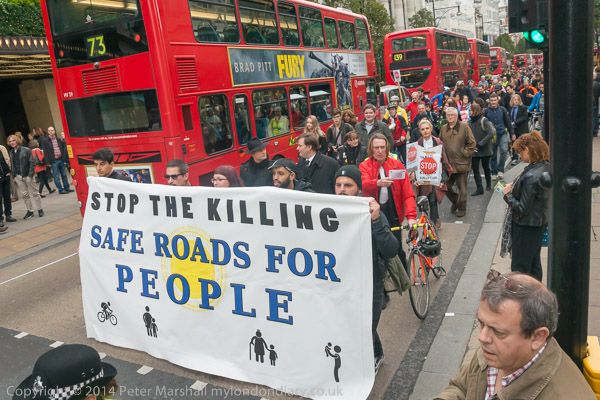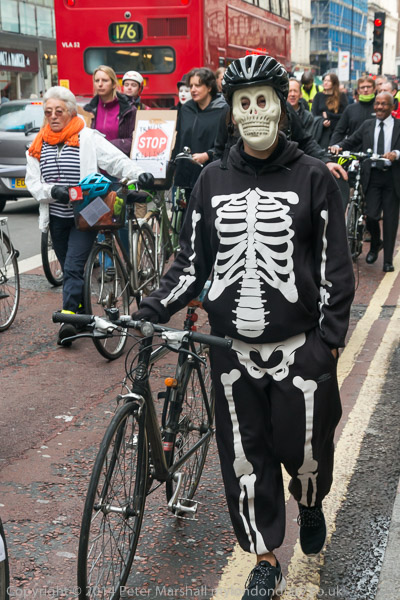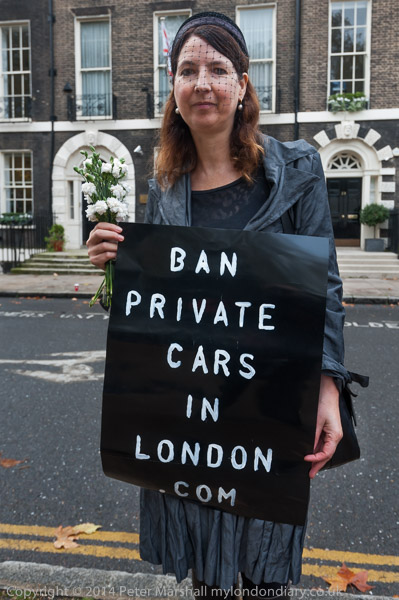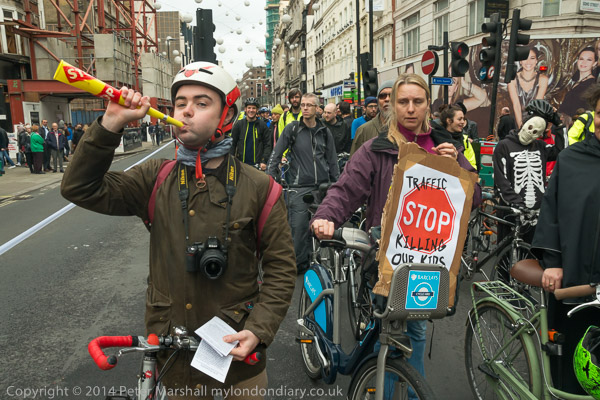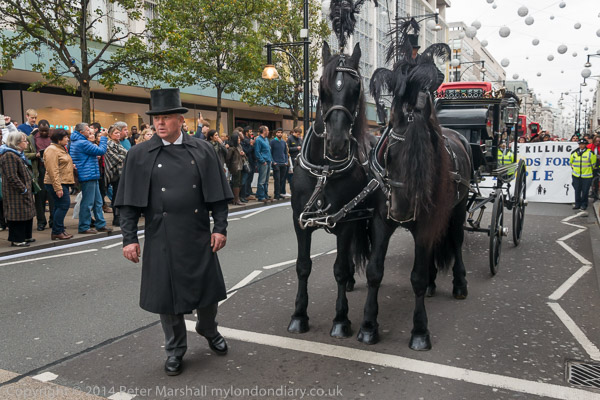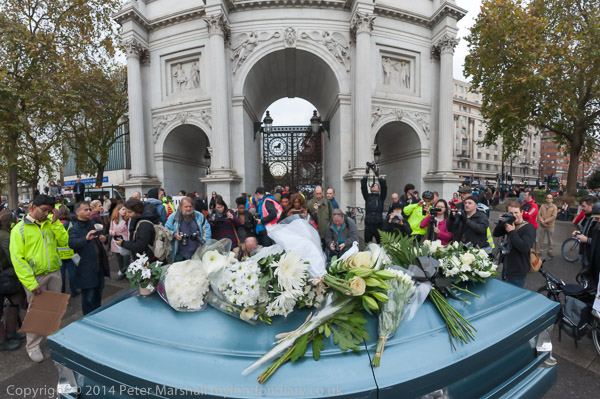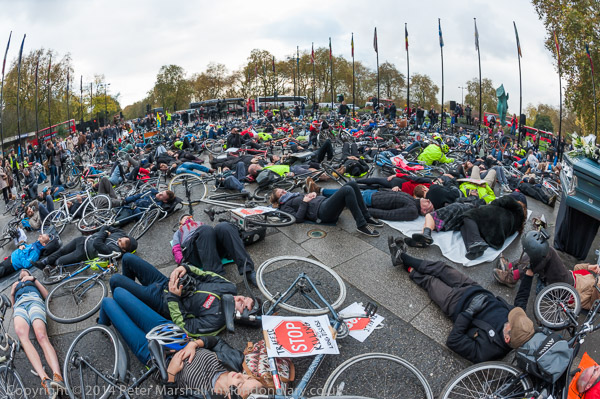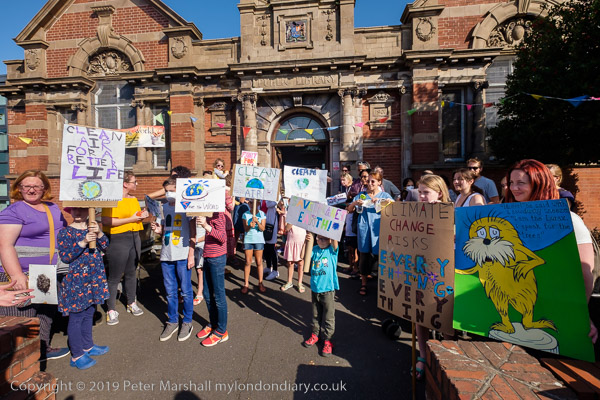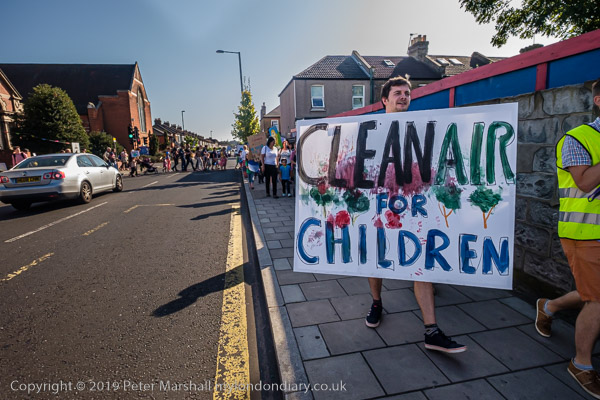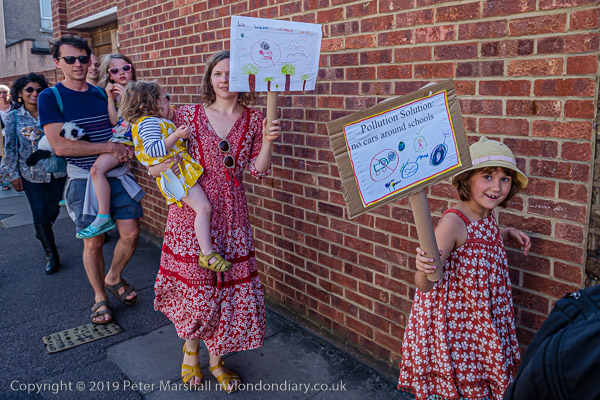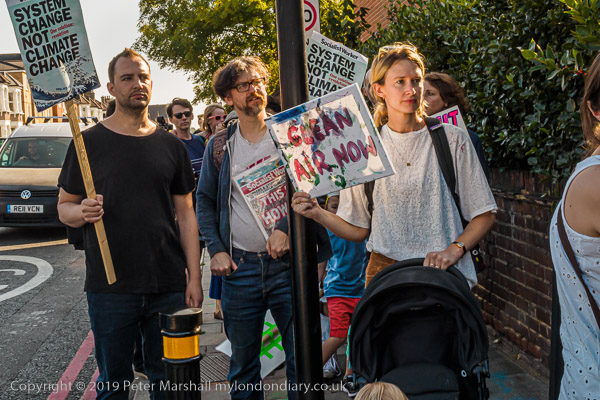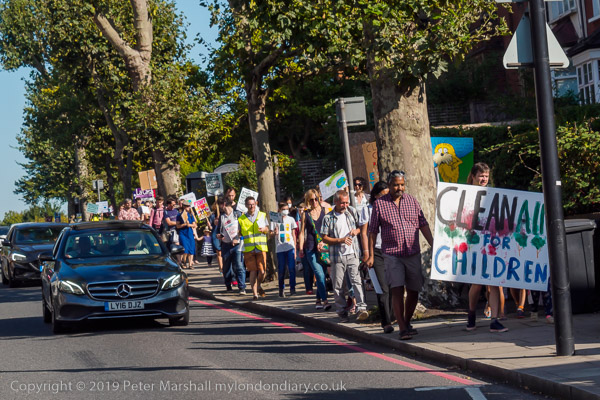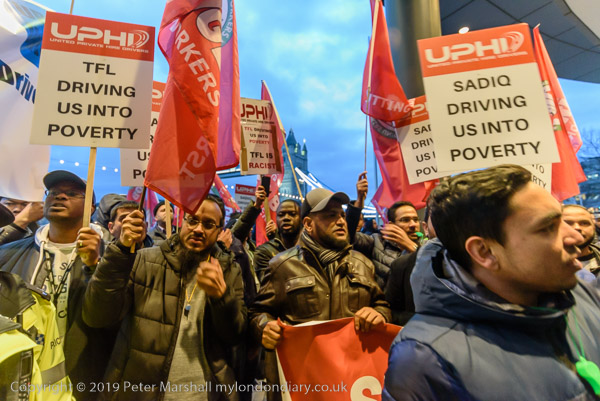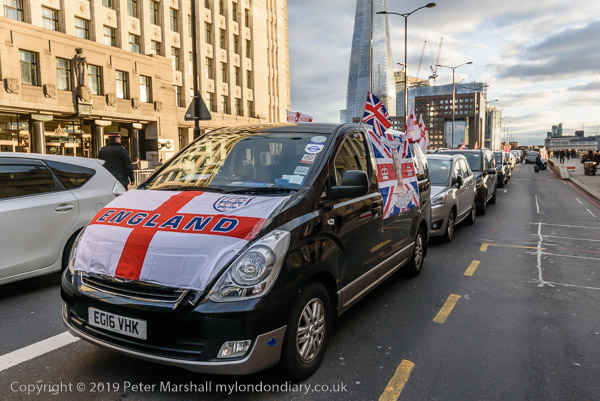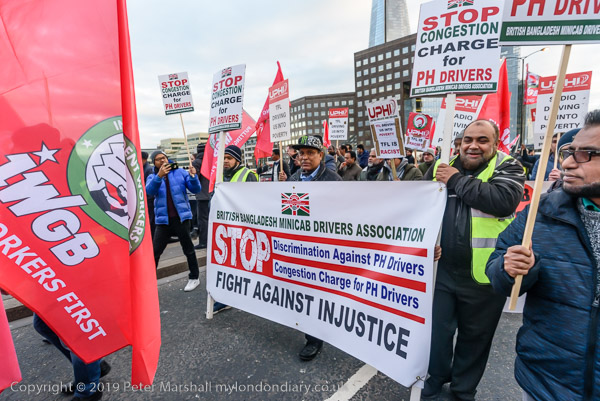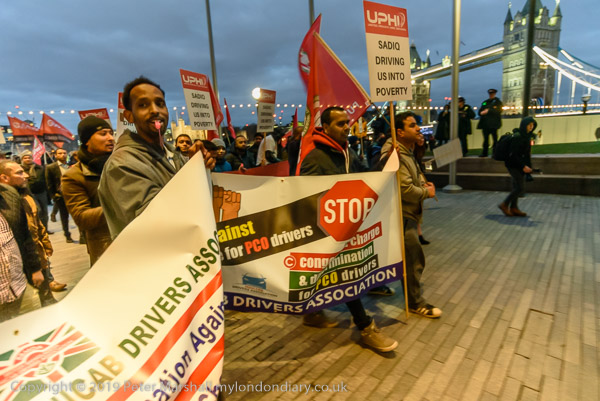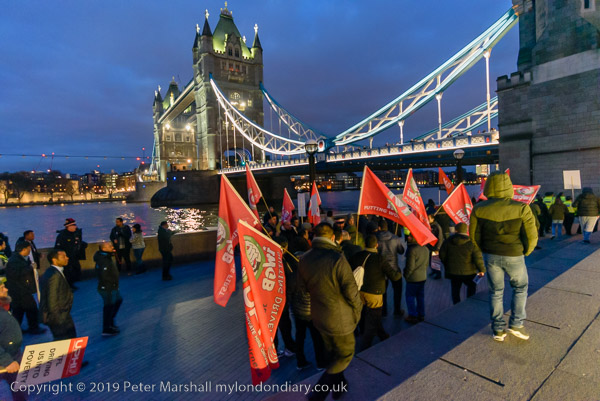Clean Air and Fair Pay – 2019. Two protests on Friday 12th July 2019 over different issues in different parts of London meant I had to leave the first before the rally at the end of the march.
XR East London marches for clean air – Bethnal Green
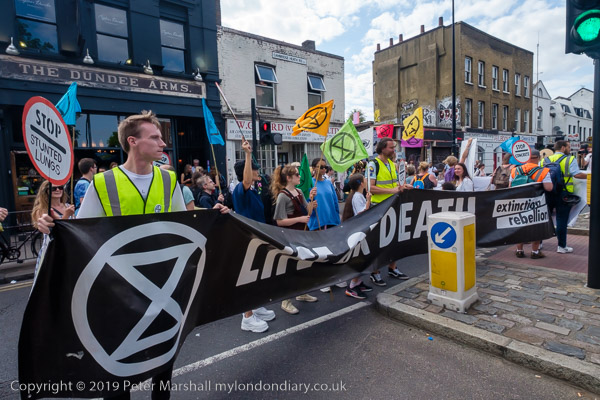
The march from Paradise Gardens at the centre of Bethnal Green to Hackney Town Hall was the initial event in a weekend of play, protest and education which Extinction Rebellion East London had organised under the title ‘East London Uprising’.
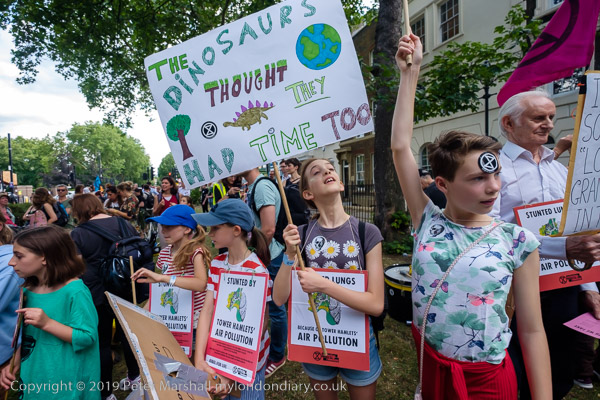
Paradise Gardens was an obvious and appropriate if ironic meeting point for this march calling for the urgent action on the environment we need if the planet is to remain habitable. Although this has been protected commonland since 1678, this public green space is a thin and rather neglected strip between the busy Cambridge Heath Road and Paradise Row, a narrower street lined mainly by Grade II listed houses. It used to be simply a part of Bethnal Green Gardens which are on the east side of the main road but got its current name from Paradise Row – and the northern part of the gardens across the traffic-clogged road became Museum Gardens.
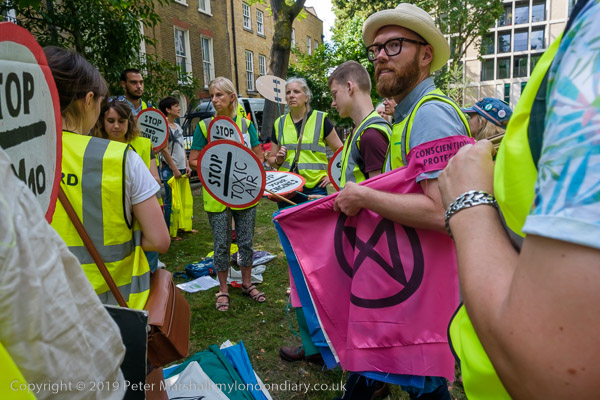
Until shortly before this protest this small area of park had been closed as it was being used by contractors for nearby construction work, with the proviso that they restore it after their work was finished. This appeared to largely have been done, and had not affected the main attraction of the area, the dozen or so large trees along both edges.
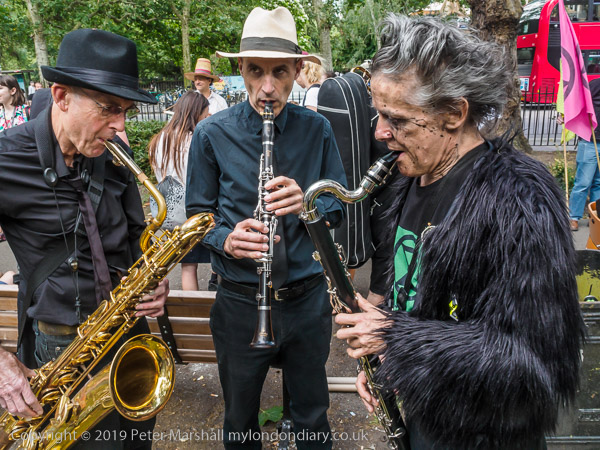
When I arrived, people were still getting ready for the march, though most were simply standing around and waiting, some were getting their faces painted while the marching band were practising playing together, and the march stewards were getting their instructions. But finally people lined up behind the main banner with its message ‘THE AIR THAT WE GRIEVE’ and moved onto the fume-laden Cambridge Heath Road.
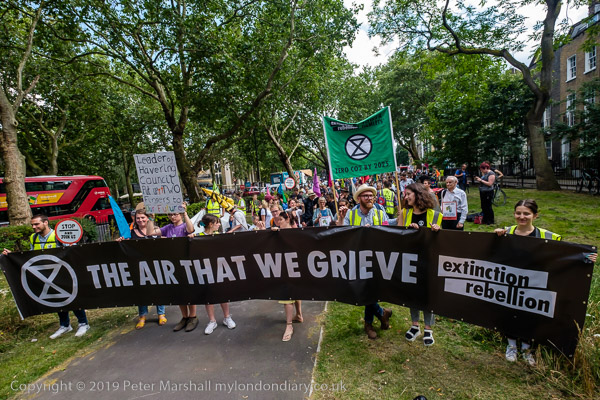
Air pollution is a huge problem in London, with many areas well above the EU’s legal limits for various pollutants much or all of the time. Traffic is a major source both of gases such as nitrogen oxides and also particulates, and moving towards electric vehicles, though an improvement will not solve the problem as much of the most dangerous particulates come from tyres and brakes. We need to cut traffic, by reducing the need for movement, shifting hugely to public transport and moving to using bicycles, electric bicycles and scooters particularly for shorter journeys.
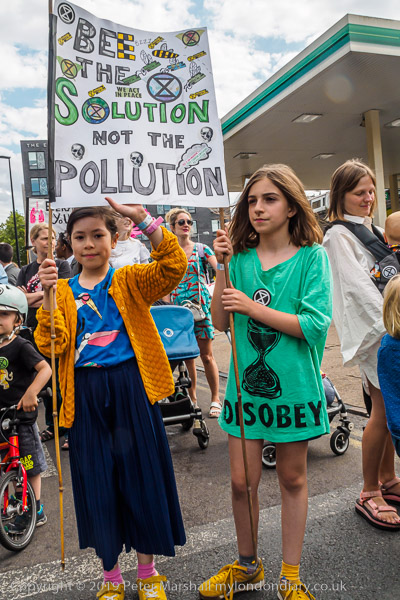
Air pollution is said to be responsible for almost 10,000 premature deaths in London each year, and a much larger number suffer from serious lung and other conditions from it, greatly reducing their quality of life and creating a heavy burden and costs for our healthcare system. But encouraging people to adopt healthier means of transport needs much more spending on making these safer and more convenient.
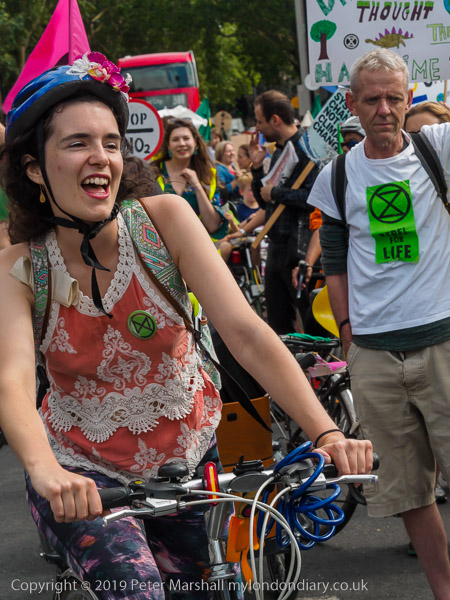
The march up one of the area’s busier roads was largely uneventful, though it will have delayed many on their journeys through the area, but it will also have made many people in the area more aware of the problems. Those who drive in London are used to delays, with an overcrowded system in which any minor problem can cause lengthy delays – and as a bus passenger it isn’t unusual I often find myself getting off and walking when I’m in a hurry.
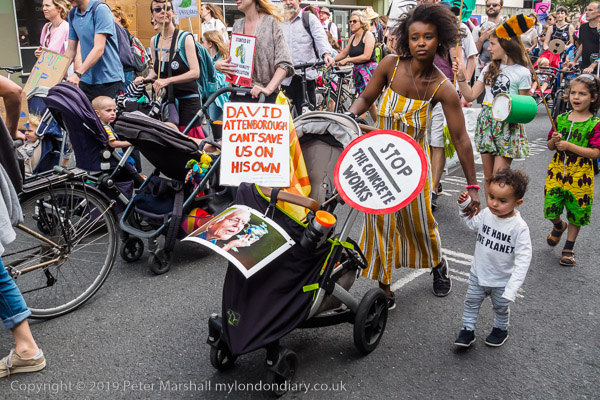
I left the march shortly after it moved across the border from Tower Hamlets into Hackney and was going up Mare Street towards the Town Hall. I was sorry to have to miss the childrens’ assembly which was to take place there at the end of the march, but wanted to be sure to be in time for the protest at Senate House in the centre of London.
More pictures: XR East London marches for clean air
IWGB welcome new Vice Chancellor – Senate House, University of London
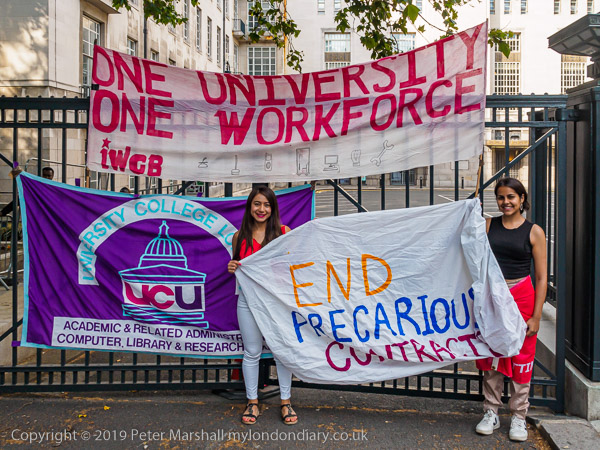
Most of the workers carrying out essential but low paid jobs at the University of London are not employed by the university but by contractors who provide their services to the university. This outsourcing results in the workers being poorly paid, often bullied and employed with only the minimum legal conditions of employment.
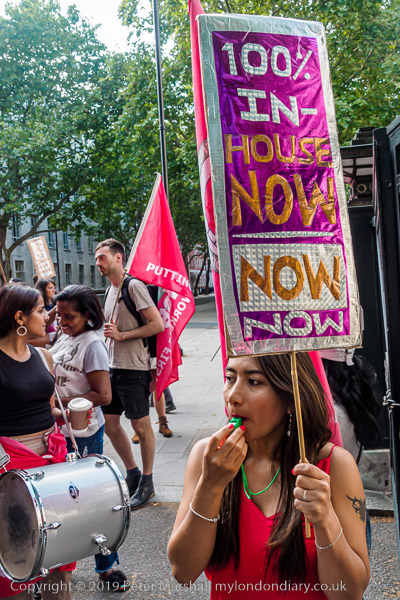
For years they have been protesting to be employed directly by the university and so get the same pay and working conditions as other staff in similar jobs that are on the payroll. In particular they want the same sick pay, holiday pay and pensions, and of course the London Living Wage.
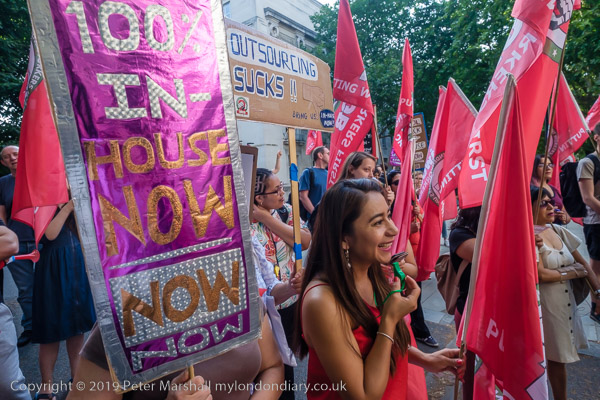
Their campaigns have met with some progress – and three years on many have been brought in house, but the university dragged its feet for many years, spending large amounts on extra outsourced security staff and refusing to talk with the unions representing the low paid workers. Although trade union legislation means that as employers have to recognise unions, neither the contractors who employed these workers nor the university in whose premises they worked were willing to recognise or negotiate with their unions.
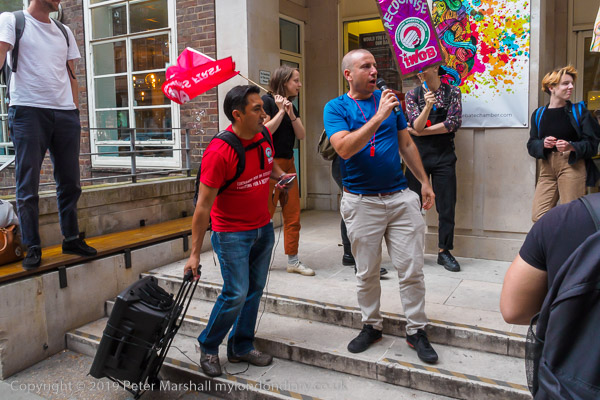
Progress has only been made by direct actions such as this by the grass-roots trade union IWGB, and by strikes by the workers. They had tried to meet with the new Vice-Chancellor Wendy Thomson but their request had simply been ignored.
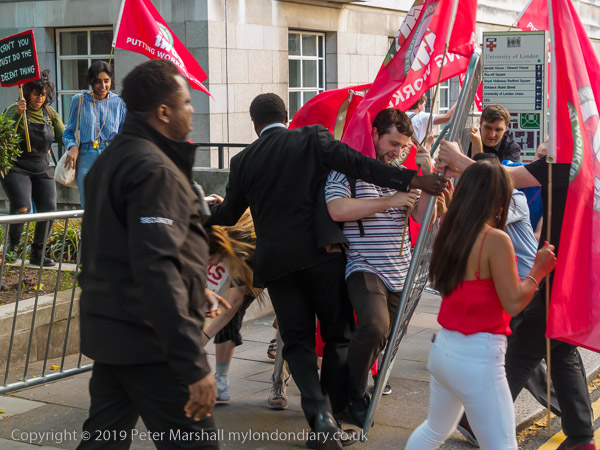
After a rally at the main gates and a protest outside Student Central (the former University of London Union, closed down by the University because it supported the workers) the protesters returned to Senate House. A small group pushed down some flimsy barriers with the extra security unable to stop them and the rest surged in after them to dance noisily in protest in the yard in front of the locked entrance to Senate House.
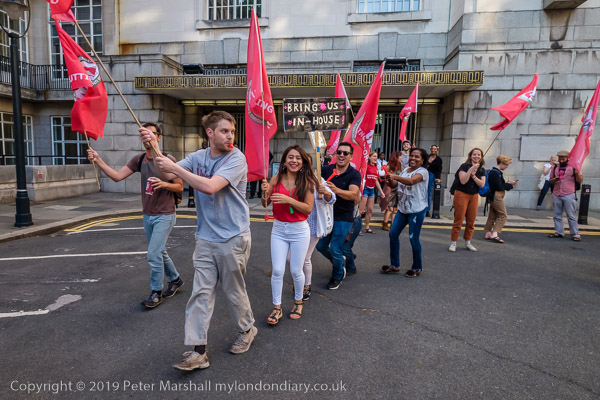
More at IWGB welcome new Vice Chancellor
